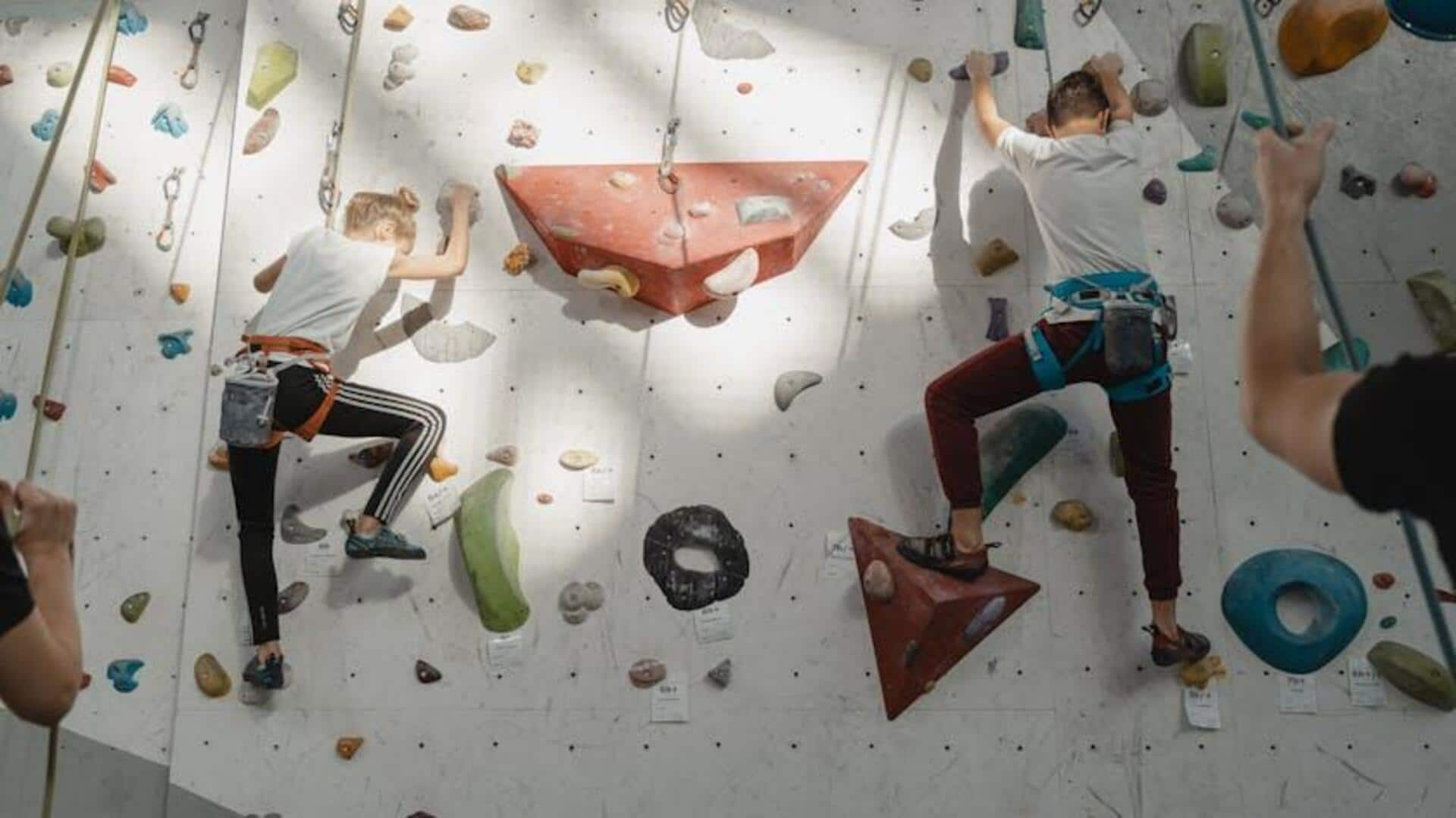
Bouldering v/s parkour: Which is better for improving strength?
What's the story
Bouldering and parkour are two physically taxing activities that challenge strength, agility, and mental focus. While bouldering is climbing short but strenuous routes sans ropes, parkour is all about traversing environments through running, jumping, and climbing techniques. Both sports demand a unique skill set and present different challenges to enthusiasts. Here's a look at the key aspects of each activity to know how they challenge the body and mind.
#1
The physical demands of bouldering
Bouldering mainly emphasizes on upper body strength, grip endurance and core stability. Climbers are often challenged with overhangs or complex holds requiring precise movement and balance. The sport also requires flexibility for reaching holds at awkward angles. Regular practice can improve muscle tone in the arms, shoulders, back and legs. Notably, bouldering improves problem-solving skills since climbers need to figure out the best route to complete a climb.
#2
Parkour's emphasis on agility
Parkour focuses on agility through dynamic movements such as vaulting over obstacles or precision jumps between surfaces. It builds strong lower body muscles for explosive power while jumping as well as quick reflexes for a safe landing. Practitioners develop cardiovascular endurance due to continuous movement sequences that mimic real-world scenarios. Parkour also promotes creativity by making individuals find new ways to navigate their surroundings efficiently.
#3
Mental focus in bouldering challenges
Mental focus is critical in bouldering as climbers require concentration while attempting tough routes with limited time or attempts (at competitions) called "problems." Fear management is also important since climbing without safety ropes means falling is common; so overcoming fear itself becomes a part of training, instilling confidence gradually while improving decision-making skills under pressure situations faced during climbs.
#4
Risk management in parkour practice
Risk management is key in parkour, as practitioners assess dangers before attempting moves. Learning the right techniques through guided sessions prevents injuries from height differences and improper landings. This way, the approach promotes safe practices globally, keeping the risks manageable. It encourages the enhancement of skills across various terrains, resulting in proficiency and the successful achievement of personal goals.